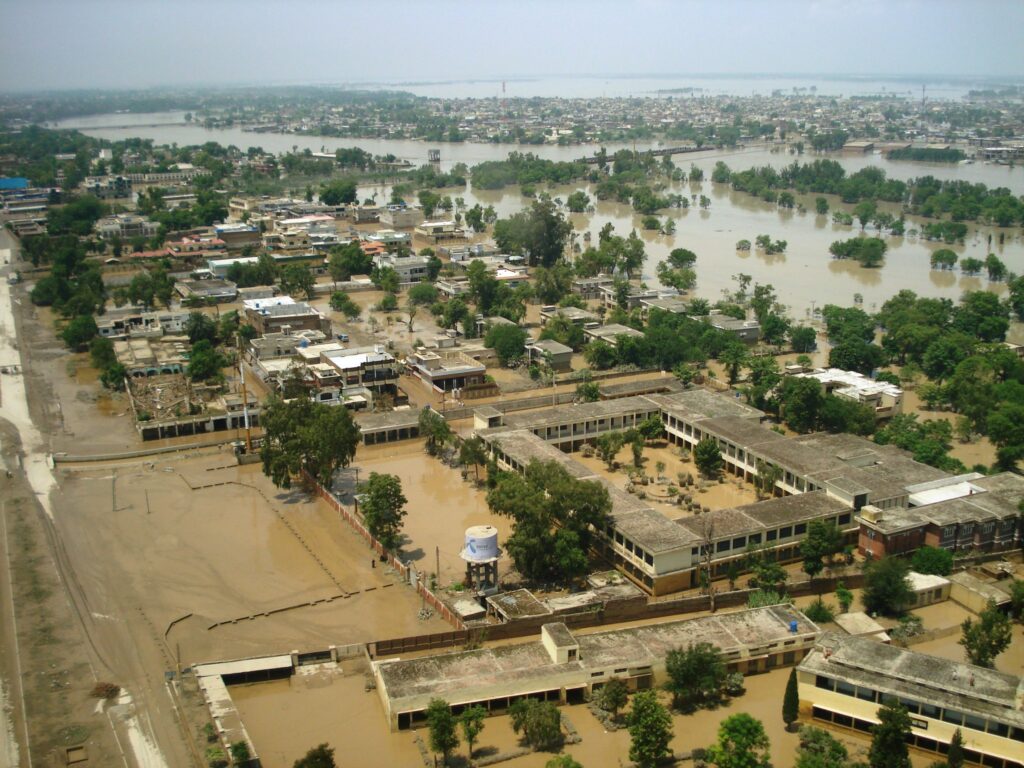
An atmospheric river led to catastrophic, deadly flooding in the Middle East in April 2023. “Rapids” in that atmospheric river were responsible for some of the highest precipitation rates, according to new research published in Geophysical Research Letters. Here we see flooding in Pakistan in 2010. Credit: UK DFID
AGU News
WaterSciCon is this week!
Press can register for free throughout the Water Science Conference, ending tomorrow, 27 June in Saint Paul, Minnesota. Recordings of scientific talks will be available for registered press. Interested reporters and press officers should email [email protected] with credentials. [press information][scientific program][media advisory]
Featured Research
Atmospheric river “rapids” contributed to 2023 flooding in Middle East
In April 2023, an intense atmospheric river delivered extreme precipitation that caused deadly flooding in the Middle East. “Rapids” delivering exceptionally high precipitation contributed to the catastrophe, a new study finds. [Geophysical Research Letters research]
Hundreds of space hurricanes hit Southern Hemisphere within a decade
“Space hurricanes” are a recently discovered type of space weather storm that occur in Earth’s ionosphere and magnetosphere, with massive swirling arms that resemble a regular hurricane. Previously identified in the Northern Hemisphere, a new study found more than 200 space hurricanes occurred in the Southern Hemisphere from 2005 to 2016. [JGR Space Physics research]
Unequal access to refuge during heat emergencies in Richmond, Va.
Urban heat islands exacerbate the warming effects of climate change in cities, and those effects disproportionately fall of historically underserved communities. In Richmond, Virginia, those communities lack adequate access to public refuge during heat emergencies, according to new research. [GeoHealth research]
Countrywide study reveals associations between built environment, mental health
While green spaces and mixed land use were associated with lower rates of depression, counties with greater air pollution typically had higher rates of depression. The strongest factors varied by region; for example, precipitation was relevant for the Northwest, while demographics were more relevant for the Southeast. [GeoHealth research]
AGU research: The latest on heat
More than 1,300 Hajj pilgrims died from heat, soaring temperatures seared the eastern United States—and summer has just begun. AGU journals have the latest in heat research. [stubborn, slow-moving heatwaves tied to El Nino][global assessment of heatwaves since 1850][Arba’een pilgrimage getting dangerously hot][what drives small versus big marine heatwaves?][carbon neutrality would curb marine heatwaves]
AGU research: The latest on floods
Extreme rain falling on saturated soils in the U.S. Midwest has rivers overflowing and flooding communities in three states, as an ongoing heat wave and high humidity put an additional 44 million under warnings. AGU journals report on climate’s double punch of heat and precipitation. [bigger, badder thunderstorms deliver heavy rain][changes coming for lakes, rivers and wetlands of north central US][crop productivity losses expected in US Midwest and world breadbaskets][climate change drives flooding around the world][historically disadvantaged people at greater risk of levee failure][scientists ask AI why extreme weather is rising in the Midwest]